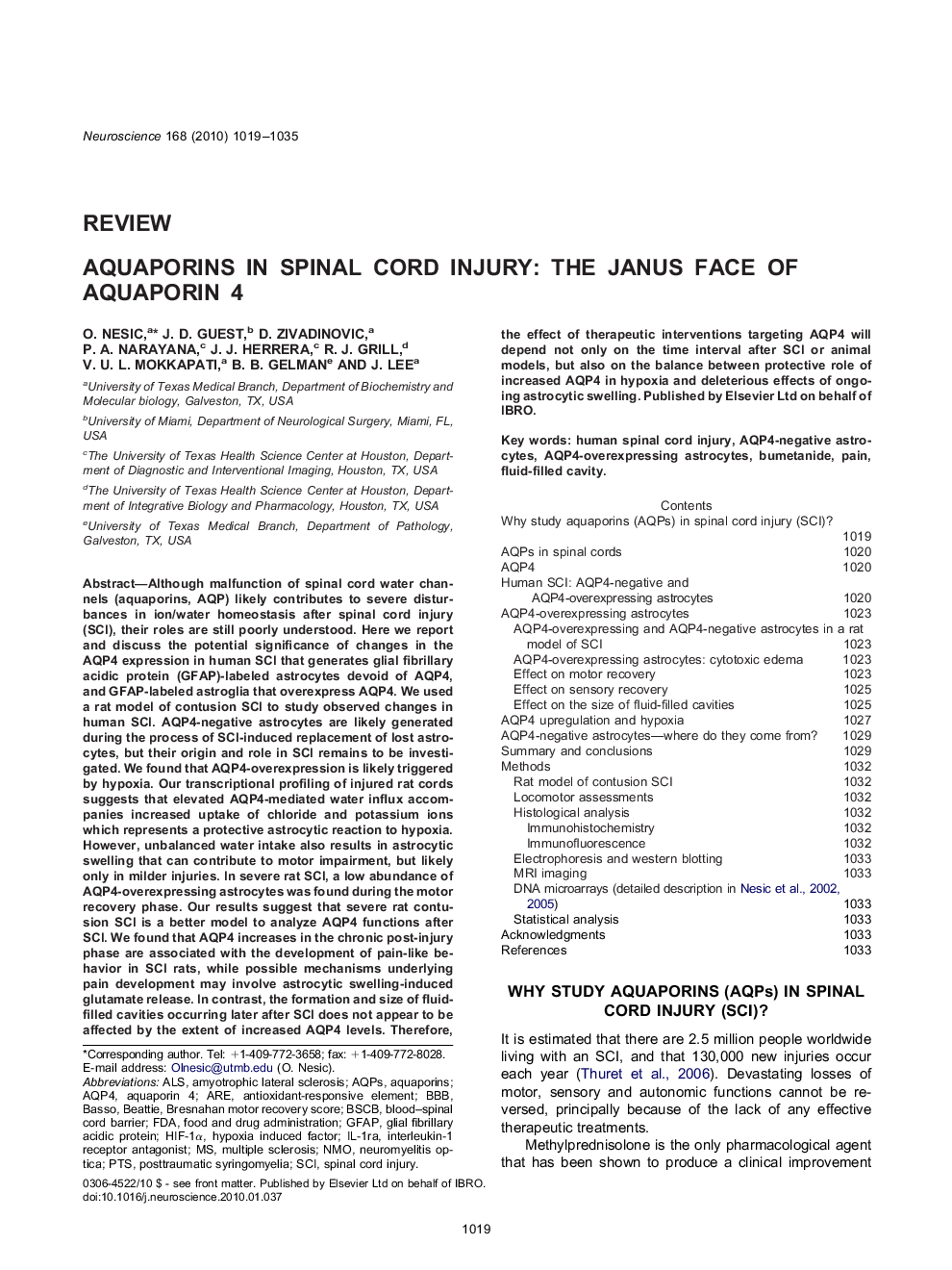| کد مقاله | کد نشریه | سال انتشار | مقاله انگلیسی | نسخه تمام متن |
|---|---|---|---|---|
| 4339473 | 1295755 | 2010 | 17 صفحه PDF | دانلود رایگان |
عنوان انگلیسی مقاله ISI
Aquaporins in spinal cord injury: the janus face of aquaporin 4
دانلود مقاله + سفارش ترجمه
دانلود مقاله ISI انگلیسی
رایگان برای ایرانیان
کلمات کلیدی
FDAGFAPAQPsNMOBSCBIL-1RAAQP4HIF-1αAquaporinsPTSspinal cord injury. - آسیب نخاعی.interleukin-1 receptor antagonist - آنتاگونیست گیرنده اینترلوکین-1aquaporin 4 - آکوپورین 4amyotrophic lateral sclerosis - اسکلروز جانبی آمیوتروفیکBumetanide - بومتانییدALS - بیماری اسکلروز جانبی آمیوتروفیکPain - دردFood and Drug Administration - سازمان غذا و داروBBB - سد خونی مغزیNeuromyelitis optica - سندرم دویکHypoxia induced factor - عامل ناشی از هیپوکسیsci - علمیantioxidant-responsive element - عنصر پاسخ دهنده آنتی اکسیدانblood–spinal cord barrier - مانع خون بند نافMultiple sclerosis - مولتیپل اسکلروزیس(ام اس)ARE - هستندGlial fibrillary acidic protein - پروتئین اسیدی فیبریلاسیون گلایال
موضوعات مرتبط
علوم زیستی و بیوفناوری
علم عصب شناسی
علوم اعصاب (عمومی)
پیش نمایش صفحه اول مقاله

چکیده انگلیسی
Although malfunction of spinal cord water channels (aquaporins, AQP) likely contributes to severe disturbances in ion/water homeostasis after spinal cord injury (SCI), their roles are still poorly understood. Here we report and discuss the potential significance of changes in the AQP4 expression in human SCI that generates glial fibrillary acidic protein (GFAP)-labeled astrocytes devoid of AQP4, and GFAP-labeled astroglia that overexpress AQP4. We used a rat model of contusion SCI to study observed changes in human SCI. AQP4-negative astrocytes are likely generated during the process of SCI-induced replacement of lost astrocytes, but their origin and role in SCI remains to be investigated. We found that AQP4-overexpression is likely triggered by hypoxia. Our transcriptional profiling of injured rat cords suggests that elevated AQP4-mediated water influx accompanies increased uptake of chloride and potassium ions which represents a protective astrocytic reaction to hypoxia. However, unbalanced water intake also results in astrocytic swelling that can contribute to motor impairment, but likely only in milder injuries. In severe rat SCI, a low abundance of AQP4-overexpressing astrocytes was found during the motor recovery phase. Our results suggest that severe rat contusion SCI is a better model to analyze AQP4 functions after SCI. We found that AQP4 increases in the chronic post-injury phase are associated with the development of pain-like behavior in SCI rats, while possible mechanisms underlying pain development may involve astrocytic swelling-induced glutamate release. In contrast, the formation and size of fluid-filled cavities occurring later after SCI does not appear to be affected by the extent of increased AQP4 levels. Therefore, the effect of therapeutic interventions targeting AQP4 will depend not only on the time interval after SCI or animal models, but also on the balance between protective role of increased AQP4 in hypoxia and deleterious effects of ongoing astrocytic swelling.
ناشر
Database: Elsevier - ScienceDirect (ساینس دایرکت)
Journal: Neuroscience - Volume 168, Issue 4, 28 July 2010, Pages 1019-1035
Journal: Neuroscience - Volume 168, Issue 4, 28 July 2010, Pages 1019-1035
نویسندگان
O. Nesic, J.D. Guest, D. Zivadinovic, P.A. Narayana, J.J. Herrera, R.J. Grill, V.U.L. Mokkapati, B.B. Gelman, J. Lee,